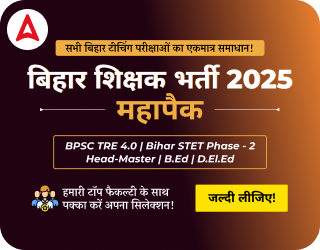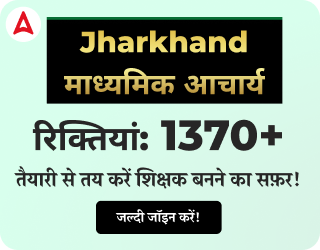Table of Contents
The Maharashtra State Council of Examination (MSCE) organizes the Maharashtra Teacher Aptitude and Intelligence Test (MAHA TAIT-2025) to check if candidates are eligible for teacher jobs in schools across Maharashtra. The exam is scheduled to be conducted between 27 May to 30 May 2025 and 2 June to 5 June 2025. Aspirants are advised to check the official dates and plan their preparation accordingly to ensure they are well-prepared for the examination.
MAHA TAIT Exam 2025 Latest Update
The Maharashtra TAIT Exam 2025 has been officially rescheduled to two phases- 27 to 30 May and 2 to 5 June 2025. However, students are requesting MSCE to reschedule the exam dates due to widespread concerns about date clashes with other competitive exams like MPSC, SET, and university-level tests. In response to requests from over 5,800 affected candidates, the MSCE coordinated with relevant agencies to minimize conflicts, confirming the revised schedule and issuing admit cards on 24 May 2025.
Read For Full Information: Is MAHA TAIT Exam Date 2025 Reschedule or Not?
MAHA TAIT Exam Date 2025
MSCE has announced the MAHA TAIT Exam Date 2025 through the official website. As per the official notification, the exam will be conducted from 27 May to 30 May 2025 and from 2 June to 5 June 2025. Candidates, check out the exam date, shift and schedule for better understanding. The admit card for MAHA TAIT Examination has been available to download on officialw website.
MAHA TAIT Exam Hall Ticket 2025
The Maharashtra State Council of Examination (MSCE), Pune, has released the MAHA TAIT Hall Ticket 2025 on its official website. The MAHA TAIT exam is scheduled to be held from 27 May to 30 May 2025 and 2 June to 5 June 2025 across various centers in Maharashtra. Candidates must carry their admit cards to the exam venue for entry, and the hall ticket can be downloaded by logging in to the official MSCE website: www.mscepune.in.
MAHA TAIT Exam Date 2025: Overview
The Maharashtra State Council of Examination (MSCE) is conducting the Maharashtra Teacher Aptitude and Intelligence Test (MAHA TAIT) 2025 to recruit eligible teaching candidates. The exam is scheduled to be held in two phases: from 27 May to 30 May 2025 and 2 June to 5 June 2025. Candidates can access the official notification, including the short notice, detailed notice PDF, and press note, as well as other updates on the official website: https://www.mscepune.in.
| MAHA TAIT Important Dates | |
| Exam Conducting Body | Maharashtra State Council of Examination (MSCE) |
| Exam Name | Maharashtra Teacher Aptitude and Intelligence Test (Maha TAIT) |
| MAHA TAIT Application Start Date | 26 April 2025 |
| Application End Date | 21 May 2025 |
| Last Date to Print Application Form | 29th May 2025 |
| MAHA TAIT Admit Card 2025 | Released |
| Exam Date | 27 May to 30 May 2025 and 2 June to 5 June 2025 |
| Official Notification |
|
| Official Website | https://www.mscepune.in/ |
MAHA TAIT Application 2025
The last date to apply for the MAHA TAIT Exam 2025 is 21 May 2025. Candidates who have not yet submitted their application must seize this last chance to apply for the MAHA TAIT 2025 Exam. They should ensure to submit a complete and accurately filled form while uploading all relevant documents and certificates to avoid rejection. As the Exam is supposed to be conducted between 27 May to 30 May 2025 and 2 June to 5 June 2025, candidates can expect the release of the admit card by the end of May 2025.
MAHA TAIT Application 2025 Notice
MAHA TAIT Notification 2025 Out
The Maharashtra State Council of Examination (MSCE) has officially released the MAHA TAIT Notification PDF on its website, www.mscepune.in, outlining all key information related to the recruitment process. Candidates interested in applying for the MAHA TAIT 2025 exam are advised to thoroughly review the notification to ensure they fulfill all the eligibility criteria and understand the exam structure, important dates, and application procedures. For convenience, a direct link to download the MAHA TAIT advertisement PDF is provided below, allowing candidates quick and easy access to the official document.
MAHA TAIT Notification PDF 2025
MAHA TAIT Application Form 2025
The online application process for MAHA TAIT 2025 is now active on the official website www.mscepune.in. Eligible candidates are encouraged to complete and submit their application forms on or before 21 May 2025, as this is the final date for submission. It is crucial to adhere to the deadline, as the application link will be deactivated thereafter, and no applications will be accepted beyond the closing date under any circumstances. Candidates are advised to apply well in advance to avoid any last-minute issues.
MAHA TAIT Application Form 2025 Link Active
MAHA TAIT Application Fee 2025
Steps to Apply for the MAHA TAIT Exam 2025 Application Form?
Aspirants applying for the MAHA TAIT 2025 must read the following guidelines before applying for the exam. This will allow them to access, fill out, and submit their application without any hassle.
- Visit Official Website: Go to MSCE’s official website and click on “Apply Online”.
- New Registration: Click on “TAIT 2025 Registration” and enter basic details to generate a Provisional Registration Number and Password.
- Fill Application Form: Use the “Save and Next” option to fill in the form and verify all details carefully before final submission.
- Upload Documents: Upload your photograph, signature, left thumb impression, and handwritten declaration as per the given specifications.
- Preview & Final Submission: Preview the entire form. Modify if needed and click “Complete TAIT 2025 Registration” only after verifying all entries.
- Pay Application Fee: Proceed to the Payment tab, and pay the fee online using debit/credit card, net banking, wallets, etc.
- Submit & Print: After successful payment, click Submit, download/print the e-receipt, and fill out the application form for future reference.
MAHA TAIT Notification 2025 Out
The Maharashtra State Council of Examination (MSCE) has released the MAHA TAIT Notification PDF on its official website, www.mscepune.in, with all the important details about the recruitment process. Candidates who wish to apply for the MAHA TAIT exam should carefully read the notification PDF to make sure they meet the eligibility requirements. A direct link to download the advertisement PDF is also provided below for easy access.
MAHA TAIT Notification PDF 2025
MAHA TAIT 2025 Eligibility Criteria
Candidates must meet the MAHA TAIT eligibility criteria before they can fill out the application form. These rules are set by the recruitment authority to make sure only qualified and capable candidates are selected.
- Educational Qualification: Candidates must possess a graduation degree from a recognised university to meet the educational qualification requirement for the Maharashtra TAIT 2025.
- Age Limit: Candidates must be at least 18 years old. The upper age limit will be decided based on the government’s rules and regulations.
MAHA TAIT 2025 Exam Pattern
Candidates planning to appear for the exam should understand the MAHA TAIT Exam Pattern 2025. It provides important information about the structure of the exam, including the subjects, total marks, time duration, and other key details.
| MAHA TAIT Exam Pattern 2025 |
||||
| Component | No. of Questions | Total Marks | Weightage (%) | Duration |
| Aptitude | 120 | 120 | 60% | 2 hours |
| Intelligence | 80 | 80 | 40% | |
| Total | 200 | 200 | 100% | |
MAHA TAIT 2025 Syllabus
The MAHA TAIT Syllabus is designed to assess the teaching aptitude and cognitive skills of aspiring teachers in Maharashtra. It is divided into two main sections: Aptitude and Intelligence. The Aptitude section evaluates skills such as mathematical ability, reasoning, language proficiency (in Marathi and English), spatial awareness, and personality traits. The Intelligence section focuses on a candidate’s logical thinking and problem-solving ability through topics like comprehension, classification, code-based reasoning, and sequencing. Understanding the complete syllabus is essential for targeted preparation and success in the MAHA TAIT 2025 exam.
MAHA TAIT 2025 Cut Off
The MAHA TAIT 2025 Cut-Off marks are the minimum scores candidates must achieve to qualify for the Maharashtra Teacher Aptitude and Intelligence Test. These cut-off marks are determined by the Institute of Banking Personnel Selection (IBPS) and the Maharashtra State Council of Examination (MSCE). They are released alongside the exam results on the official website. Candidates scoring above the cut-off are shortlisted for further selection processes.
| MAHA TAIT Articles 2025 | |
| MAHA TAIT Exam Analysis 2025 | MAHA TAIT Answer Key 2025 |
| MAHA TAIT Result 2025 | |




 Bihar BPSC Special Teacher Recruitment 2...
Bihar BPSC Special Teacher Recruitment 2...
 KTET 2025 Notification Out, Exam Date, A...
KTET 2025 Notification Out, Exam Date, A...
 HPRCA TGT Recruitment 2025, Exam Date, A...
HPRCA TGT Recruitment 2025, Exam Date, A...




